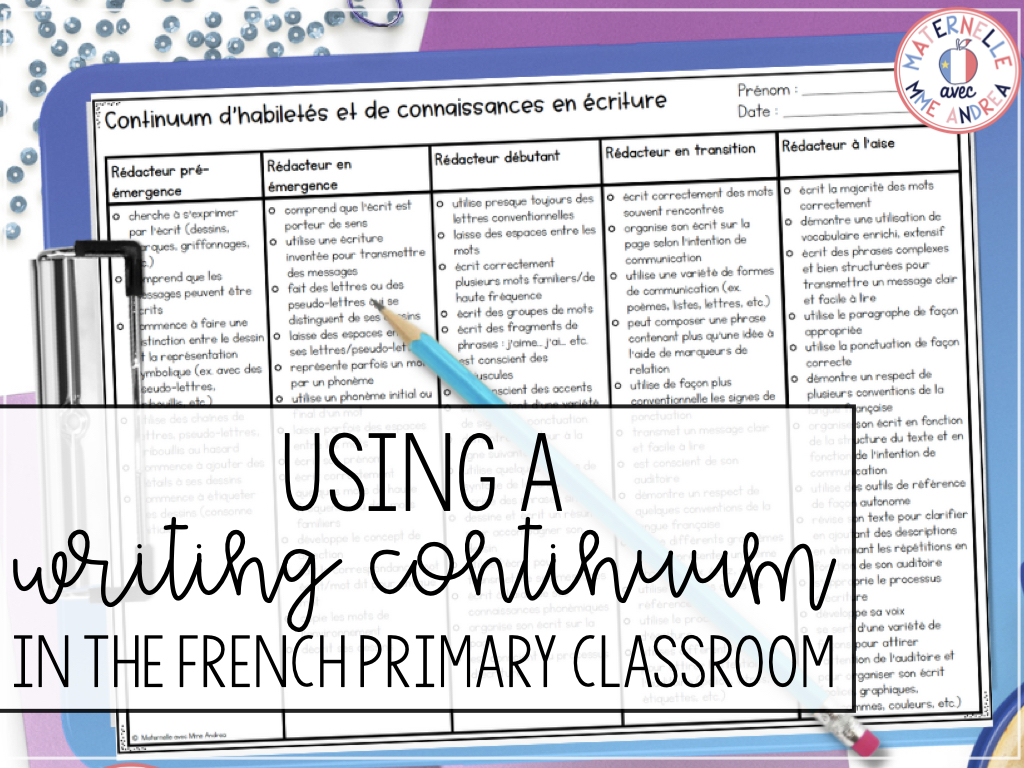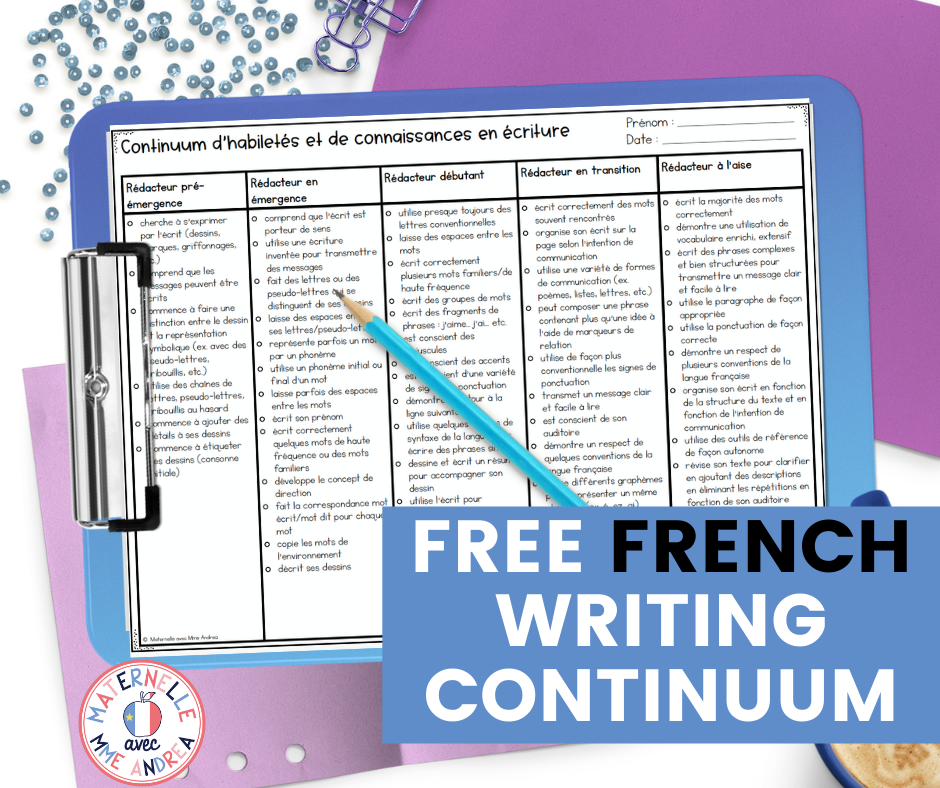Who here agrees that teaching writing can be a real challenge? I used to think that too, but now, writing is one of my FAVOURITE subjects to teach, and is definitely my smoothest block of the day! What helped me with that transition? Definitely using a writing continuum!
When I first started teaching “writing”, my writing block consisted of either A. My students copying something word for word from the board or B. Me running around like a chicken with my head cut off, trying to help everyone write everything. This was NOT a fun or good use of my time, haha!
One thing that was holding me back from being a good writing teacher were my expectations/thoughts about what writing *is* and how it should look.
I was thinking about writing and basing my ideas on what writing should be from an adult’s perspective.
I hadn’t really peeled back the layers of how the writing process begins, and what it looks like, right from the pre-writing stage. Plus, I wasn’t meeting my students where they were at, and using that information to guide my teaching.
One day, during a Pinterest search to try and help ease my writing “lesson” woes, I came across something that looked pretty cool. It was a writing continuum! It was in English, but still amazing and definitely a turning point in my teaching.
Now, I use a writing continuum in French that I translated/adjusted to suit my needs, and it guides my teaching in so many ways. In this blog post I’ll share some of those with you!

What is a Writing Continuum?
A writing continuum is a collection of writing behaviours that may present themselves in your students. Each writing behaviour fits underneath a header, which is what kind of writer your student is currently or is working on becoming.
You likely won’t observe EVERY single writing behaviour from every single student, but when looking at a few pieces of their writing, you should be able to check off enough boxes to get a good picture of where they are currently at in their writing journey.
The goal is to figure out where they are currently, so that you know what their next steps are!
The continuum is sort of like a road map – it shows you next steps that you can teach your students, and it allows them to practice to get them closer to their final destination.
It will likely take years for students to progress through the entire writing continuum, but hopefully, they will be « un rédacteur à l’aise » by the end of second grade/beginning of third grade.
When Do I Use the Writing Continuum?
If you try to use the continuum with every student every day, it’s likely that you won’t see much progress! Try to remember, slow and steady wins the race :).
It takes time for students to learn and apply new writing skills and behaviours on their own. If you are trying to check things off every day, it’s probably not going to work that well!
I always place each student on the continuum at the end of each reporting period. I make notes about their writing behaviours during every small group session, but I actually take those notes and check the boxes as I am getting ready to write report card comments and decide on their marks.
One tip is to do your checkmarks in a different colour pen for each term; that way it’s easy to use the same continuum all year long and see progress from term to term. I just print one per student at the start of the year, and slide it behind their tab in my evaluation binder.
How Does Using a Writing Continuum Help My Teaching?
Using a writing continuum helps my teaching in so many ways!
First of all, the writing continuum keeps me encouraged and feeling positive about where my students are at. Nowhere on the continuum is “bad” or “behind”. The continuum is just a little slice of data that shows you where a student is right now, and what the next step is for them.
The continuum really helps guide you to make sure you’re not pushing a student to skip a bunch of steps. For example, if a student is in the first column and they are trying to express themselves by doing scribbles or marks to show their writing, you’re not going to push them to write full sentences with spaces as their next step.
Their next step is going to be to use a bunch of random strings of letters. Maybe with some spaces in between to show that they understand that it’s the letters that make up words, not scribbly lines.
The Most Important Thing to Remember?
The continuum just helps you remember that learning to write is a process. It’s gradual, it’s step by step, and all the steps are good. Your students are perfect exactly where they are.
Their writing is already worthy. It’s our job to help them advance to the next step at their own pace. But, their work is already valuable and wonderful just the way that it is. We’re just helping them learn that next step!
I also use the continuum during parent conferences because it’s really easy to show parents exactly where their child is, all the progress they have made, and where I want them to end up later.
The continuum also really helps me form my small groups and prepare lessons that are appropriate for each group. If I know a student’s next step, that’s what we can work on in small group conferences or one-on-one conferences.
And if my whole class is stuck on one step, then I can easily turn that into a mini-lesson (or a few mini-lessons!).
Conclusion
Hopefully this post clears up more about what a writing continuum is and why it’s so key to your writing instruction.
If you want to know more about how I teach writing in my classroom, be sure to grab a copy of my FREE Guide to Writer’s Workshop by clicking HERE.
You can also grab a copy of the writing continuum I use by clicking HERE.
Looking for more blog posts about writing? Check them out below!
The Best Way to Structure Your Writing Block
What Writer’s Workshop Is vs Isn’t
Tips for Running Writer’s Workshop in COVID Times
Happy writing!



